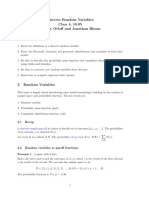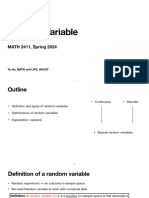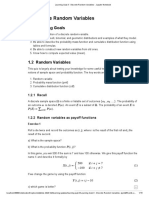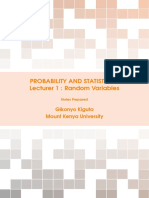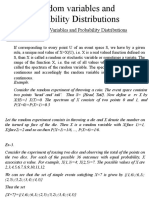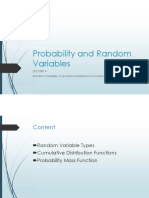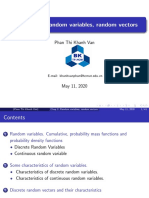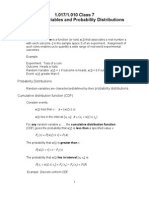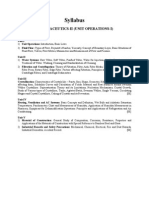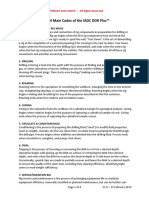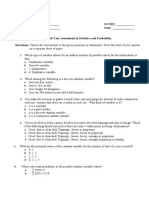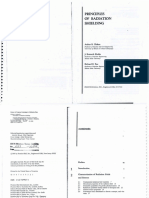0% found this document useful (0 votes)
27 views42 pages4-Discrete Random Variables
Discrete random variables take on countable values. Their probabilities are defined by a probability mass function (PMF) which gives the probability that the random variable equals each possible value. The cumulative distribution function (CDF) gives the probability that the random variable is less than or equal to each value. CDFs can be used to find probabilities involving ranges of values, like the probability a discrete random variable is between two values.
Uploaded by
ngocbao123steamCopyright
© © All Rights Reserved
We take content rights seriously. If you suspect this is your content, claim it here.
Available Formats
Download as PDF, TXT or read online on Scribd
0% found this document useful (0 votes)
27 views42 pages4-Discrete Random Variables
Discrete random variables take on countable values. Their probabilities are defined by a probability mass function (PMF) which gives the probability that the random variable equals each possible value. The cumulative distribution function (CDF) gives the probability that the random variable is less than or equal to each value. CDFs can be used to find probabilities involving ranges of values, like the probability a discrete random variable is between two values.
Uploaded by
ngocbao123steamCopyright
© © All Rights Reserved
We take content rights seriously. If you suspect this is your content, claim it here.
Available Formats
Download as PDF, TXT or read online on Scribd
/ 42

